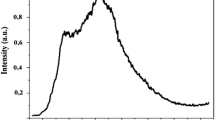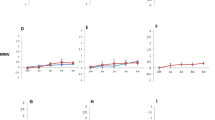Abstract
Extrusion is the most common manufacturing process used to produce heat-treated dry dog and cat food (pet food) for domestic use and international trade. Due to reoccurring outbreaks of notifiable terrestrial animal diseases and their impact on international trade, experiments were undertaken to demonstrate the effectiveness of heat-treated extruded pet food on virus inactivation. The impact of extrusion processing in a pet food matrix on virus inactivation has not been previously reported and very few inactivation studies have examined the thermal inactivation of viruses in complex food matrices. The feline calicivirus vaccine strain FCV F-9 was used as a surrogate model RNA virus pathogen. Small-scale heat inactivation experiments using animal-derived pet food raw materials showed that a > 4 log10 reduction (log10 R) in infectivity occurred at 70 °C prior to reaching the minimum extrusion manufacturing operating temperature of 100 °C. As anticipated, small-scale pressure studies at extrusion pressure (1.6 MPa) showed no apparent effect on FCV F-9 inactivation. Additionally, FCV F-9 was shown not to survive the acidic conditions used to produce pet food palatants of animal origin that are typically used as a coating after the extrusion process.



Similar content being viewed by others
References
Bianchini, A., Stratton, J., Weier, S., Harrter, T., Plattner, B., Rokey, G., et al. (2012). Validation of extrusion as a killing step for Enterococcus faecium in a balanced carbohydrate-protein meal by using a response surface design. Journal of Food Protection, 75, 1646–1653.
Bianchini, A., Stratton, J., Weier, S., Harrter, T., Plattner, B., Rokey, G., et al. (2014). Use of Enterococcus faecium as a surrogate for Salmonella enterica during extrusion of a balanced carbohydrate-protein meal. Journal of Food Protection, 75, 1646–1653.
Bidawid, S., Malik, N., Adegbunrin, O., Sattar, S. A., & Farber, J. M. (2003). A feline kidney cell line-based plaque assay for feline calicivirus, a surrogate for Norwalk virus. Journal of Virological Methods, 2, 163–167.
Bozkurt, H., D’Souza, D. H., & Davidson, P. M. (2013). Determination of the thermal inactivation kinetics of the human norovirus surrogates, murine norovirus and feline calicivirus. Journal of Food Protection, 76, 79–84.
Buckow, R., Isbarn, S., Knorr, D., Heinz, V., & Lehmacher, A. (2008). Predictive model for inactivation of feline calicivirus, a norovirus surrogate by heat and high hydrostatic pressure. Applied and Environmental Microbiology, 74, 1030–1038.
Cannon, J. L., Papafragkou, E., Park, G. W., Osborne, J., Jaykus, L.-A., & Vinje, J. (2006). Surrogates for the study of norovirus stability and inactivation in the environment: a comparison of murine norovirus and feline calicivirus. Journal of Food Protection, 69, 2761–2765.
Crane, S.W., Moser, E. A., Cowell, C. S., Millican, J., Stout, N. P., Romano, P. R., Crane, S. E. (2010). Commercial pet foods. In Small animal clinical nutrition (Chap. 8, pp. 157–190). New York: Elsiever.
Knight, A. I., Haines, J., & Zuber, S. (2013). Thermal inactivation of animal virus pathogens. Current Topics in Virology, 11, 103–119.
Larkin, E. P. (1977). Thermal inactivation of viruses. U.S. Defence Technical Information Centre Report ADA048068.
Mattison, K., Bidawid, S., Simard, C., Lessard, L., Mueller, P., Trottier, Y.-L. (2010). Propagation and quantification of feline calicivirus using cell culture methods. Ottawa: Canadian Microbiological Methods Committee.
Okelo, P. O., Joseph, S. W., Wagner, D. D., Wheaton, F. W., Douglass, L. W., & Carr, L. E. (2008). Improvements in reduction of feed contamination: An alternative monitor of bacterial killing during feed extrusion. Journal of Applied Poultry Research, 17, 219–228.
Rokey, G. (2013). Pet food safety. Feed Compounder Pet Food Supplement, 15, 14–17.
Ukulu, D. O., Onwulata, C., & Mukhopadhyay, S. (2012). Behaviour of Escherichia coli bacterial in whey protein concentrate and corn meal during twin screw extrusion processing at different temperatures. Journal of Food Processing and Technology, 3, 1000150.
Ye, M., Li, X., Kingsley, D. H., Jiang, X., & Chen, H. (2014). Inactivation of human norovirus in contaminated oysters and clams by high-hydrostatic pressure. Applied and Environmental Microbiology, 80, 2248–2253.
Acknowledgments
This work was carried out by Leatherhead Food Research under contract to Nestle Ltd.
Author information
Authors and Affiliations
Corresponding author
Rights and permissions
About this article
Cite this article
Haines, J., Patel, M., Knight, A.I. et al. Thermal Inactivation of Feline Calicivirus in Pet Food Processing. Food Environ Virol 7, 374–380 (2015). https://doi.org/10.1007/s12560-015-9211-7
Received:
Accepted:
Published:
Issue Date:
DOI: https://doi.org/10.1007/s12560-015-9211-7




